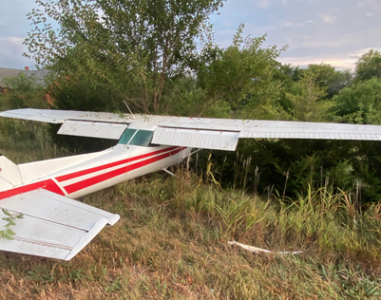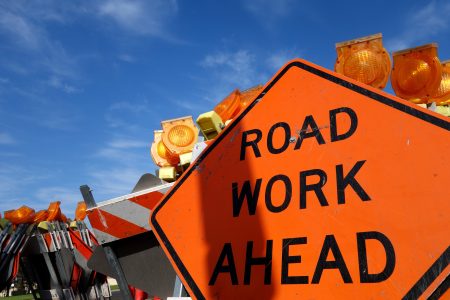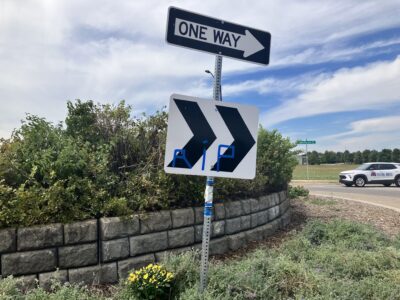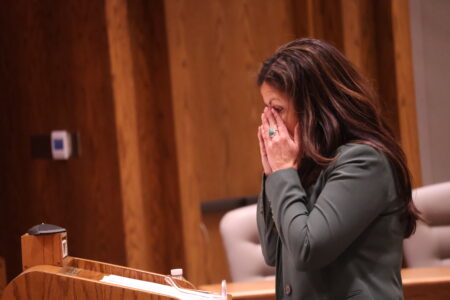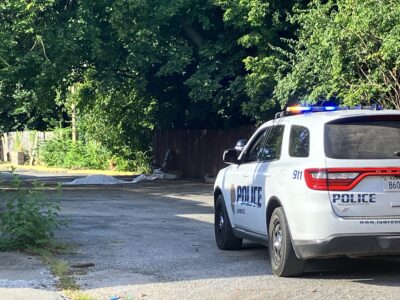Construction to expand west leg of SLT to 4 lanes could begin in 2024; feds grant key environmental approval
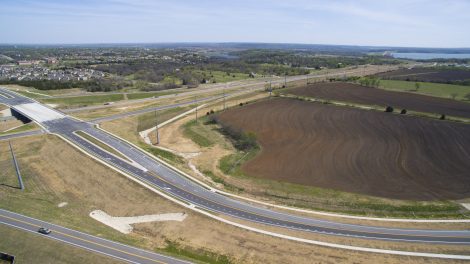
photo by: Nick Krug
A view looking southeast shows the overpass where Bob Billings Parkway meets the South Lawrence Trafficway on Thursday, April 14, 2016.
Story updated at 6:16 p.m. Monday:
Plans to expand the western leg of the South Lawrence Trafficway are on track to begin construction in 2024, as federal officials approved a key component of the project.
The Federal Highway Administration and the Kansas Department of Transportation approved the project’s Supplemental Environmental Impact Statement on Monday. KDOT officials said in a release that the decision would allow final design work to begin immediately with “construction anticipated to begin in 2024.”
The SEIS process does involve the selection of a general design for the project. As expected, federal regulators selected the freeway design option, which will involve adding two new lanes of traffic and building a median to separate traffic. The design will produce the same style of freeway that exists on the eastern half of the SLT, which already has four lanes of traffic.
KDOT and the Federal Highway Administration evaluated several alternatives for the expansion and recommended the four-lane design in September 2020, as the Journal-World reported. The recommended layout for the expansion adds two lanes to the western leg of the SLT to create a four-lane divided highway, with the ability to expand in the future to six lanes.
The current west leg of the trafficway — the portion west of Iowa Street — is a two-lane highway that has been the site of several serious accidents. State officials already have identified expanding the road to four lanes as one of the state’s top transportation projects to be built. However, the project could not proceed until federal regulators granted environmental approvals.
The approved layout eliminates the existing at-grade crossing of the trafficway at 27th Street/Wakarusa Drive and replaces the intersection with ramp access. Existing interchanges at West Sixth Street/U.S.-40, Bob Billings Parkway, Clinton Parkway, and U.S.-59/Iowa Street would remain interchanges with modifications to accommodate additional freeway travel lanes. The Farmer’s Turnpike will maintain full access to K-10 through an at-grade intersection.The I-70 interchange ramp terminals would also be eliminated, and alternatives include new service interchanges at I-70/East 600 Road/Lecompton Road and K-10/I-70/North 1800 Road to provide local access.
The study considered broad, long-term transportation improvements along the west leg that would reduce congestion, enhance safety, promote a multimodal transportation system and support local and regional growth, according to the study summary. The study considered several alternatives, including an option not to expand the highway, and potential environmental and social impacts.
The study summary states in part that as the project consists almost entirely of improvements to the existing and immediately adjacent roadway corridor, much of the access and continuity would remain virtually unchanged or be improved by the project. Impacts to natural resources such as wetlands and floodplains will likely occur, as will urban environmental impacts such as noise impacts.



